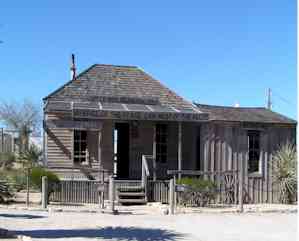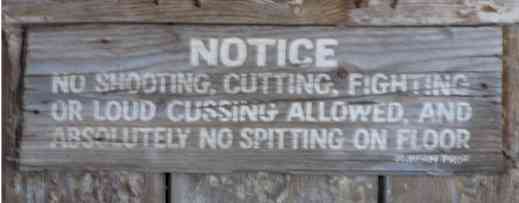
Langtry- Judge Roy Bean
Judge Roy Bean was not a real judge. He was appointed as Justice of the Peace by the railroad company. He claimed to be "the law west of the Pecos". In fact, he very nearly was. He ruled by his own sense of justice and was not overly swayed by the actual laws. He once showed an assistant a copy of the Statute Laws of the State of Texas. He told him what it was and that the government sent him a new copy every year. "They are very good", he said, "for starting fires."
He did not have a jail. Any crime was punishable by a fine and, perhaps, being run out of town. The latter sentence was rather severe if he had also fined the miscreant all the money he had and confiscated his horse and guns. He could also be merciful and sometimes freed an accused man without a trial. Strangely enough, these lucky men were always stony broke and had nothing worth confiscating.
Judge Roy Bean was an avid fan of a British actress named Lily Langtry. He never met her although he may have seen her perform years earlier in San Francisco. He wrote to her many times asking her to perform in Langtry. He told her that the town was named for her (although it was not) and painted a glowing picture of the town and the "opera house". She never answered any of his letters. She did finally come to Langtry; about three months after he had died.

After we left Del Rio headed west for Big Bend, we crossed the Pecos River. On the west side of that river we were in the land of Judge Roy Bean. Being law abiding citizens of Texas, neither of us broke the law by diving from the bridge. Another incentive was that there was very little water in the river under the bridge.

This is the "Jersey Lilly". It was Roy Bean's home, saloon and courthouse. This was the nickname of his favorite actress, Lily Langtry. The Judge misspelled her name but then, no one can be perfect at everything. The building has been preserved and can be seen at a museum run by a tourist information center.

Because the barroom was so small, the Judge often held court on the front porch to allow room for the large audience his trials always drew. Of course, on these occasions the trials had frequent recesses to cater to a thirsty court. Below is a close-up of the sign back of the bar. You can see this was strictly a high class place.

The museum displays are very well done and worth a stop.